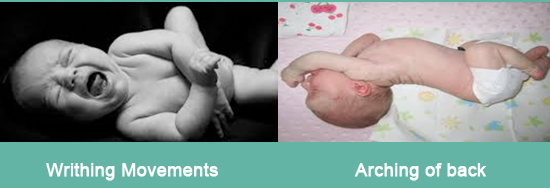Pain and stress in the neonates
- Introduction...
- 1. Learning object...
- 2. Behavioural res...
- 3. Facial expressi...
- 4. Body movements...
- 5. Physiological r...
- 6. Autonomic chang...
- 7. Painful procedu...
- 8. Painful procedu...
- 9. Other condition...
- 10. Premature Infa...
 |
 |
Introduction
DR. S. MANGALA BHARATHI
MD, DM (Neonatology)
Associate Professor
Institute of Child Health and Hospital for Children
Madras Medical College, Chennai
1. Learning objectives
► Recognizing pain
♦ Behavioural changes
♦ Physiological changes
♦ Autonomic changes
► Procedures and pain
► Scales for pain evaluation
2. Behavioural responses
► Facial expressions
► Crying
► Body movements
► State changes
3. Facial expressions

4. Body movements


5. Physiological responses
► Changes in
♦ Heart rate
♦ Blood pressure
♦ Respiratory rate
♦ Saturation
6. Autonomic changes
► Mydriasis
► Sweating
► Pallor
► Flushing
7. Painful procedures: Mild pain
► Physical Examination
► Heel Prick
► Venepuncture
► Arterial puncture
► Intramuscular/ subcutaneous injection
► Feeding tube insertion
► Umbilical cannulation
► Adhesive tape removal
8. Painful procedures: Moderate pain
► Lumbar puncture
► Intubation
► ET suction
► ICD drain
► Ventricular tap
► ROP examination
► Central line (insertion or removal)
► Chest physiotherapy
► Dressing change
► Suprapubic puncture
9. Other conditions
► Surgical procedures
► NEC
► Mechanical ventilation
► Meningitis
► Bone and joint infections
10. Premature Infant Pain Profile (PIPP) scale
► Facial actions
► Heart rate changes
► Saturation changes
► State
► Gestational age
